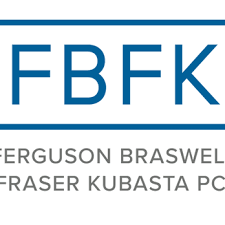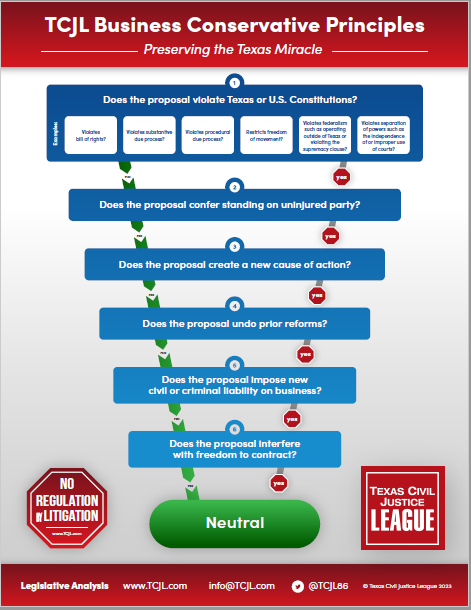 In a case that thoroughly reviews the law governing waiver of arbitration, the Fort Worth Court of Appeals has reversed a trial court order denying a law firm’s motion to compel arbitration in a legal malpractice case.
In a case that thoroughly reviews the law governing waiver of arbitration, the Fort Worth Court of Appeals has reversed a trial court order denying a law firm’s motion to compel arbitration in a legal malpractice case.
Ferguson Braswell Fraser & Kubasta, P.C. and Soumit Roy v. SAF Oilfield I, LLC and SAF Capital Partners, LLC (No. 02-22-00171-CV; filed January 26, 2023) arose from a failed business deal. SAF Capital retained Roy, who practiced with the Ferguson law firm, to assist it with its “corporate needs.” SAF signed the law firm’s engagement agreement, which contained a broadly written arbitration clause applying to “[a]ny controversy, dispute or claim arising out of, or in connection with, or in relation to the interpretation, performance or breach of the [engagement agreement] and legal services rendered by [the firm] or any of its owners, employees, including but not limited to fee disputes and legal malpractice . . . .” Attorney Roy assisted SAF in acquiring another company, which became a wholly-owned subsidiary called SAF Oilfield. Roy also became a director of the new entity. Not long after the acquisition, SAF Oilfield filed for bankruptcy. This set off a chain of lawsuits, the first by the seller against SAF, Roy, and the law firm for breach of contract, fraud, and conspiracy. SAF then notified Roy and the firm of its potential malpractice claim, which the parties spent two years trying to mediate. When the mediation failed, SAF sued Roy and the firm for legal malpractice for failing to conduct due diligence in the acquisition of the bankrupt and breach of fiduciary duty for Roy’s actions as a director. Two months after the lawsuit was filed, Roy unsuccessfully moved to transfer venue. Roy moved to compel arbitration, with the firm joining the motion a few months later. The trial court denied the arbitration motions without stating a basis for its decision.
The court of appeals reversed. The first issue was whether SAF’s claims came within the scope of the arbitration agreement. SAF argued that the arbitration clause did not apply to the acquisition of the company but only “corporate needs.” It argued further that the law firm could not invoke the arbitration clause because, in the underlying lawsuit, the firm argued that Roy was not acting in the scope of his employment with the firm when he acquired that company. Roy had also previously argued that his activities as director lay outside the scope of his employment with the firm. The court brushed aside SAF’s “corporate needs” argument, stating simply that the term unambiguously encompassed a corporate acquisition. The court then held that, even if the alleged malpractice was committed by Roy acting outside his scope of employment, the arbitration clause still applied because “an arbitration provision may have broader scope than its surrounding contract” (citation omitted).
Citing In re Rubiola, 334 S.W.3d 220 (Tex. 2011), in which SCOTX held that an arbitration provision was broader than the mortgage financing agreement around it, the court found that the provision in the engagement letter covers what it says it does: “any controversy, dispute, or controversy” arising out of the legal representation provided by the firm and its employees. As “public policy favors the broad construction of arbitration agreements, (citation omitted) we cannot say ‘with positive assurance that [the] arbitration clause is not susceptible of an interpretation’ that would exceed its scope beyond that of the Engagement Agreement” (citations omitted). Finally, the court rejected SAF’s contention that the firm was “quasi-estopped” from asserting arbitration since it “admitted” that Roy’s work was outside his scope of employment. According to the court, “whether a claim falls within an arbitration provision’s scope is not determined by the defendants’ deposition testimony or pleadings. Rather, to determine whether a party’s claims fall within an arbitration agreement’s scope, we focus on the plaintiff’s factual allegations in its petition” (citations omitted). Looking to those allegations, the court found that SAF’s petition “unambiguously alleged that [the firm’s] and Roy’s work during and soon after the acquisition—the actions which formed the basis for SAF’s claims—were part of the ‘legal services rendered by [the firm] or [Roy, who was one] of its owners or employees.”
SAF’s next line of attack asserted that SAF Oilfield was not covered by the arbitration agreement because it was a nonsignatory. Citing the “six scenarios” in which nonsignatories may be compelled to arbitrate (which include agency, equitable estoppel, and third-party beneficiary), the court found that SAF Oilfield’s and SAF Capital’s claims were merged in the pleadings and SAF Oilfield made no attempt to demonstrate independent grounds for liability or a separate unwritten agreement. Similarly, SAF contended that Roy could not invoke the arbitration provision because he was a nonsignatory agent of the firm. This argument did not fly very far, either. The court observed that any legal malpractice case against a law firm (or other case, for that matter) could be recast as a case against one of the nonsignatory agents of the firm, thus negating the arbitration provision. Even so, the court held that the broad arbitration provision contemplated actions against both the firm and its employees, signatories and nonsignatories alike.
The last issue considered by the court was waiver. SAF claimed that the three-year delay between the time it notified the firm and Roy of potential malpractice claims and Roy’s motion to compel arbitration constituted waiver. The appropriate standard for waiver is whether a party “substantially invokes the judicial process” through “conduct inconsistent with a claimed right to compel arbitration” (citations omitted). Here the court was unpersuaded that any of Roy’s or the firm’s activities in connection with SAF’s lawsuit rose to the level of “substantial invocation.” These included an effort to mediate the case, a motion to transfer venue, some responses to discovery, and participation in pre-tolling agreements.
As the court noted, “the Texas Supreme Court has declined to find waiver even when the party seeking arbitration has, among other things, filed suit, moved to dismiss for lack of standing, moved to set aside a default judgment, removed the case to federal court, moved to strike an intervention, opposed discovery, requested an initial round of discovery, noticed and taken as many as four depositions, opposed a trial setting, and agreed to a trial setting” (citation omitted). When SAF pushed the delay issue, the court rejected it, noting that SAF’s claim of a three-year delay running from the time of notice of a potential claim was erroneous. The key date was SAF filing the lawsuit, since a party can “never” be found to have waived arbitration to determine its own liability by waiting around to be sued. In any event, the real delay here was only six months, far less than in other cases which have declined to find waiver based on much longer delays. Finally, none of the pre-suit efforts to mediate or post-suit responses rose to the level of conduct “inconsistent with with the right to compel arbitration.”
This is yet another case that pretty categorically enforces the public policy in favor of arbitration. We wonder at this point what conduct might cross the line and “substantially invoke the judicial process.” There are a lot of reasons a party might hold off making a motion to compel arbitration, even if the party is well within its contractual right to do so. Texas courts clearly recognize this and hold the door open to alternative dispute resolution for as long as possible.











